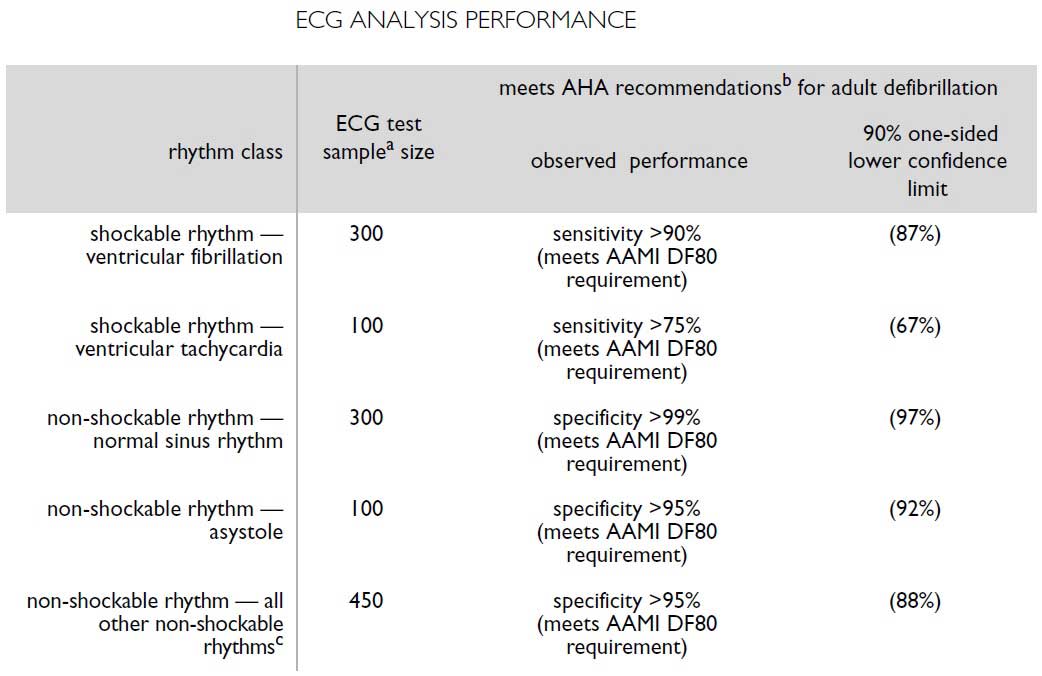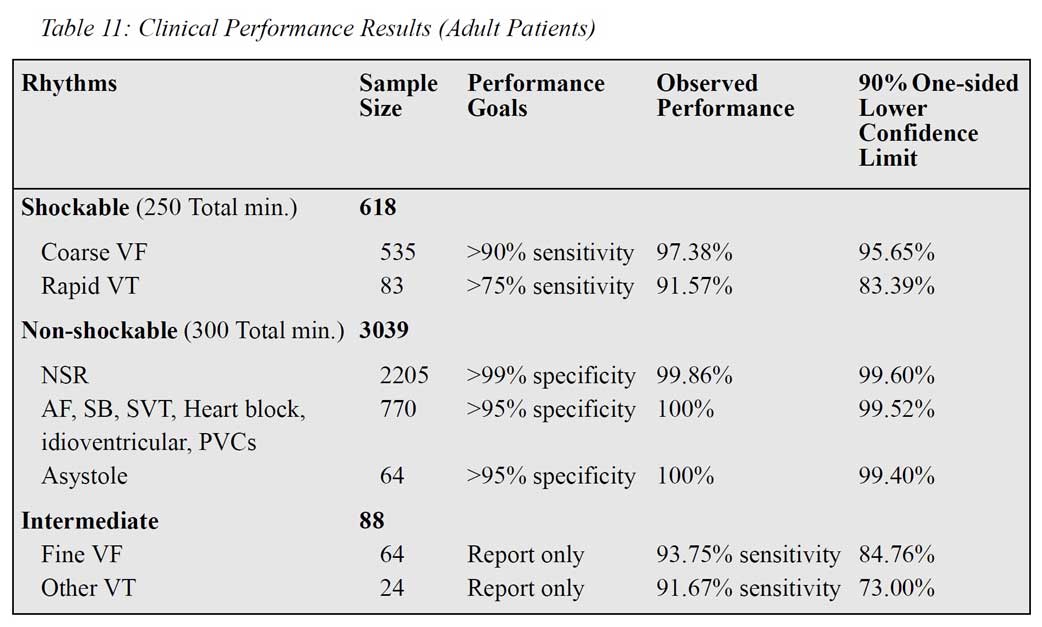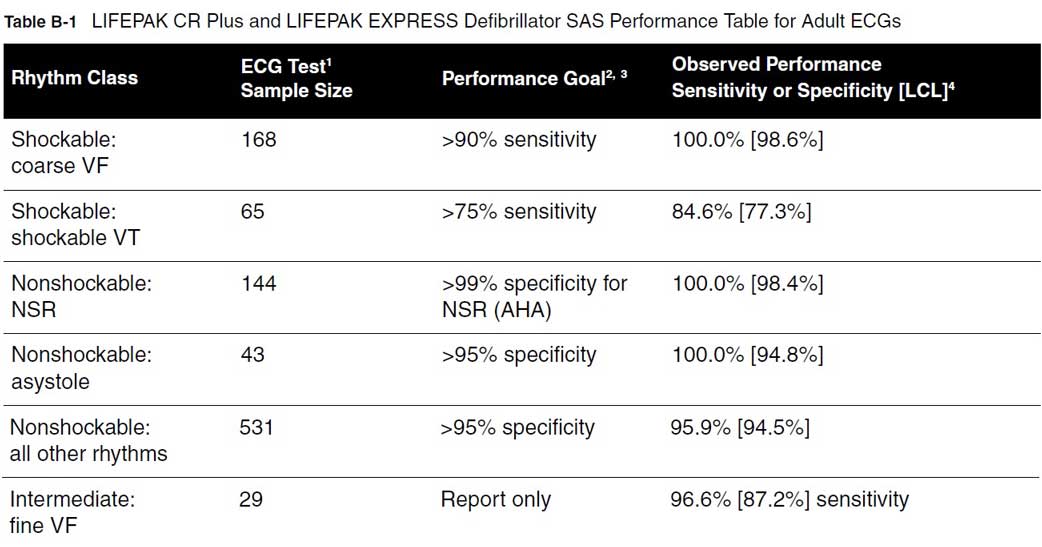2015 Best portable automated external defibrillators

Chain of Survival
To save a life, 3 actions must occur within the first moments of a sudden cardiac arrest1
- Activation of the emergency medical services (EMS)
- Provision of cardiopulmonary resuscitation (CPR), and
- Prompt operation of an AED
What is an AED? What is a defibrillator?
AED stands for: automated external defibrillator. An AED is a portable electric device capable of treating several cardiac arrhythmias such as ventricular fibrillation, ventricular tachycardia, atrial fibrillation and atrial flutter, among others… By delivering an electric current through the heart, it resets the action potentials of all myocardial cells, enabling the normal sinus rhythm to take over and hence restores a normal blood circulation.
Why is that important?
In the USA alone, at least 250’000 people suffer a sudden cardiac arrest each year. Half of the victims of a sudden cardiac arrest will need an electrical cardioversion (shock). Mortality due to ventricular fibrillation increases rapidly after a collapse if the cardiac arrhythmia is not treated promptly. Survival is greatest when a defibrillator is placed within 3 to 5 minutes of a witnessed collapse, that is, before EMS arrival2.
With the growing evidence of the life-saving efficacy of early defibrillation to treat ventricular fibrillation and unstable tachycardia, the use of portable external defibrillators has become widespread. Many kinds of manual, semi- and fully automated external defibrillators are available.
Is it worth the cost?
Automated external defibrillators (AEDs) permit defibrillation by trained first responders as well as untrained cardiac arrest witnesses. Lay rescuer CPR + AED doubles the number of survivors from out-of-hospital ventricular fibrillation sudden cardiac arrest3. In a study of >300 000 patients, increased presence of AEDs resulted in increased defibrillation by bystanders and increased survival4. AEDs are cost-effective at sites where there is a high density of potential victims. They are increasingly found in airports, shopping or community centers, sport stadium, offices and schools. When buying becomes a question, the profusion of available devices makes the choice of the appropriate one difficult. We review here a non-exhaustive list of high quality AEDs which have proven their efficacy. All these AEDs are compatible with the 2010 American Heart Association (AHA) Guidelines. The prices provided are informative only. You will find better prices on the market.
Philips HeartStart HS1 First Aid Defibrillator

The Philips HeartStart HS1 is a lightweight AED unit (1.5 kg/3.3 lbs with battery and pads cartridge installed).The parameters of the electric shock delivered are automatically adjusted as a function of each patient’s impedance (mass). Detailed voice messages guide responder through use of the defibrillator and reminds to call for medical assistance. The pads are deployed by pulling an intuitive green handle. An explicit illustration shows where to place the adhesive pads on the patient’s chest. The lithium manganese dioxide battery has a 4 years standby life. The HS1 is a robust device and withstands 1 meter drop on any surface.
Philips HeartStart HS1 facts sheet:
| Energy Delivered | Adult: nominal 150 Joules into a 50 ohm load Infant/Child: nominal 50 Joules into a 50 ohm load |
| Quick Shock® | Delivers a shock after the end of a CPR interval, typically in 8 seconds |
| Weight | 1.5 kg / 3.3 lbs. |
| Waveform | Biphasic Truncated Exponential. Waveform parameters adjusted as a function of each patient’s impedance. |
| Temperature | Operating: 32º – 122º F (0º – 50º C)Standby: 50º – 109º F (10º – 43º C) |
| Data Stored | First 15 minutes of ECG and the entire incident’s events and analysis decisions. |
| Pads Life | At least two years from date of manufacture. |
| Battery Life | 4 years in standby, 200 shocks, 4 hours of operating time |
| Connectivity | Infrared Data transfer |
| Models available | Semi-automatic AED |
| List price | $1,354.00 |
– Very light weight
– Intuitive pads deployment and placement
– Long battery life in standby
CONS:
– No fully automatic model available
– Slightly lower self-reported arrhythmia detection sensitivity and specificity
ZOLL AED Plus

The ZOLL AED Plus is a robust and efficient AED with a one-piece electrode set. An explicit infographic covers the top of the device, guiding you through the reanimation process and complementing the audio and LCD instructions.
The slightly less intuitive electrode placement is outbalanced by the Real CPR Help® system. The electrode sensor monitors the efficacy of the reanimation and provides a live audio CPR feedback. This function allows constant improvement of the chest compressions’ depth (at least 2 inches/5cm) and rate (100 per minute) during the mechanical reanimation. Batteries are user-replaceable type 123A lithium manganese dioxide camera batteries available from retail stores.
A fully automated version of the device is also available: If a shock is indicated, it will be delivered automatically after a brief verbal countdown. Some early studies have demonstrated the safety and efficacy of fully automated AEDs but these remain to be investigated in the real world, for example in case of very lousy environment or depending on the responder’s comprehension. Paradoxically, we recommend using the fully automated version of the Zoll AED plus only in settings where the potential responders are already informed of the device’s full automation.
Zoll AED facts sheet:
| Energy Delivered | Adult: Automatic preprogrammed selection (120J, 150J, 200J) Infant/Child: Pedi-padz® II electrodes (50J, 70J, and 85J) |
| Charge time | Less than 10 seconds |
| Weight | 3.1 kg / 6.7 lbs. |
| Waveform | Rectilinear Biphasic. Waveform parameters adjusted as a function of each patient’s impedance. |
| Temperature | Operating: 32° to 122°F; 0° to 50°CStorage: -22° to 158°F; -30° to 60°C |
| Data Stored | 50 minutes of ECG and CPR data. If audio recording option is installed and enabled, 20 minutes of audio recording, ECG, and CPR data. If audio recording is disabled, 7 hours of ECG and CPR data |
| Pads Life | 5 years |
| Battery Life | 5 years in standby, 300 shocks, 13 hours of monitoring |
| Connectivity | Infrared Data transfer |
| Models available | Fully or semi-automatic |
| List price | $1,995.00 |
– CPR Feedback
– Very high performance
– Long expiration date of the battery and pads
– Batteries available from retail stores
CONS:
– Slightly less intuitive electrode placement
– A little heavier
Physiocontrol LIFEPAK CR Plus AED
The Physiocontrol Lifepak CR Plus AED is a high performing and easy to use automated external defibrillator. It has a very good sensitivity and specificity in detecting life-threatening arrhythmias. Physiocontrol is a spin-off from the well-known Medtronic Company. This device is light weighted but has a bit lower battery capacity than the competition. It is available as fully automatic (a shock is automatically delivered when indicated) or semi-automatic (the rescuer is commanded to push the shock button). Like the two other models, an IrDA (infrared) port can transmit the stored data to a computer for analysis. The LIFEPAK CR Plus AED can deliver biphasic shock energies up to 360 joules.

Physiocontrol Lifepak CR Plus AED facts sheet:
| Energy Delivered | Adult: 200-300-360 Joules Infant/Child: -75% |
| Charge time | 200 Joules less than 9 sec, 360 Joules less than 15 sec |
| Weight | 2.0 kg / 4.5 lbs. |
| Waveform | Biphasic Truncated Exponential. Waveform parameters adjusted as a function of each patient’s impedance. |
| Temperature | Operating: 32º – 122º F (0º – 50º C)Storage: -40° to 70°C (-40° to 158°F) max 1 week |
| Data Stored | 20 minutes of ECG. Event log report and summary with waveform segments |
| Pads Life | Approximately 2 years |
| Battery Life | Approximately 2 years in standby, 20 shocks or 140 minutes of operating time |
| Connectivity | Infrared Data transfer |
| Models available | Fully or semi-automatic |
| List price | $2,195.00 |
| Warranty | 8 years |
– High performance
– Ease of use
– Good Portability
CONS:
– Short expiration date of the electrodes and battery (CHARGE-PAK®)
– Lower battery capacity
Conclusion
AEDs are cost-effective in many situations. We reviewed three popular AEDs. All three are high performing devices. They are compliant with the 2010 American Heart Association (AHA) Guidelines. We value your interest for AEDs and more generally for CPR and hope that this guide helped you find the unit that best suits your needs.
NOTE:
Defibrillators are indicated for use on patients in cardiac arrest (no pulse, unconscious, not breathing normally, no movement). For children under 8 years old or up to 25 kg (55 lb), attenuated energy defibrillation electrodes are indicated when available.
- 2010 American Heart Association Guidelines for Cardiopulmonary Resuscitation and Emergency Cardiovascular Care Science
- The Effectiveness and Cost Effectivenessof Public-Access Defibrillation
- Public-Access Defibrillation and Survival after Out-of-Hospital Cardiac Arrest
- Nationwide Public-Access Defibrillation in Japan





